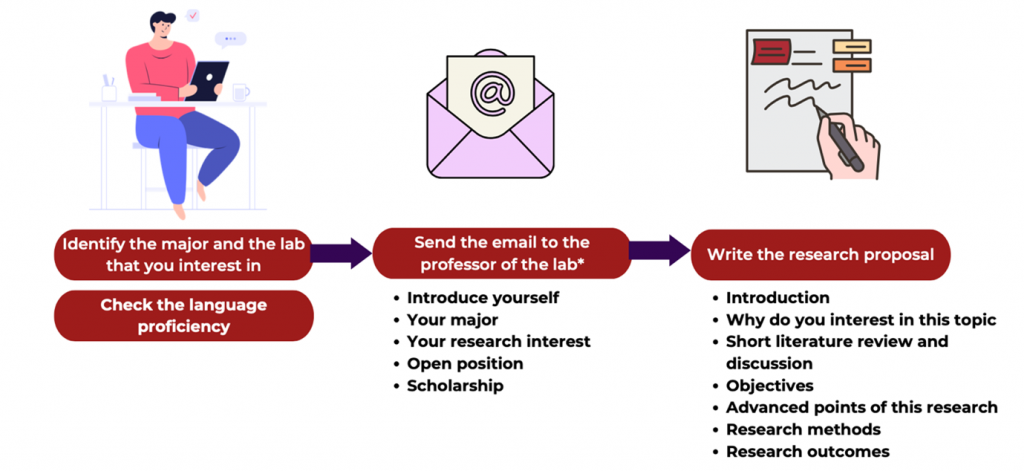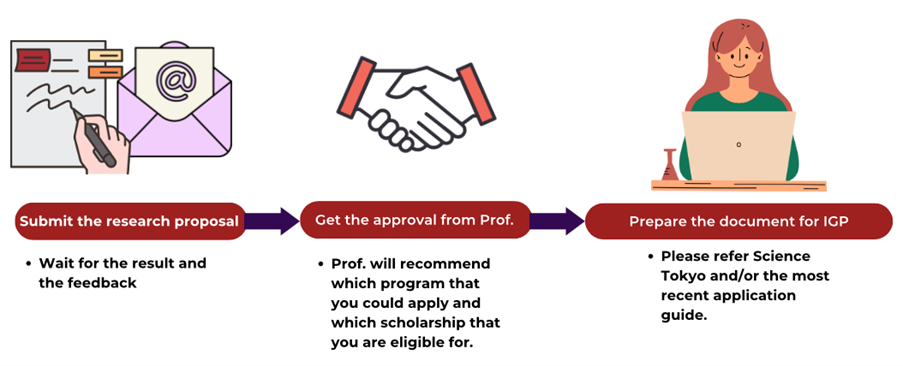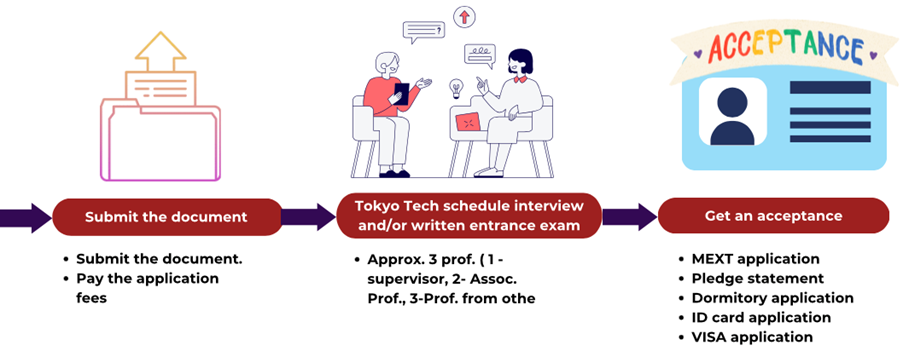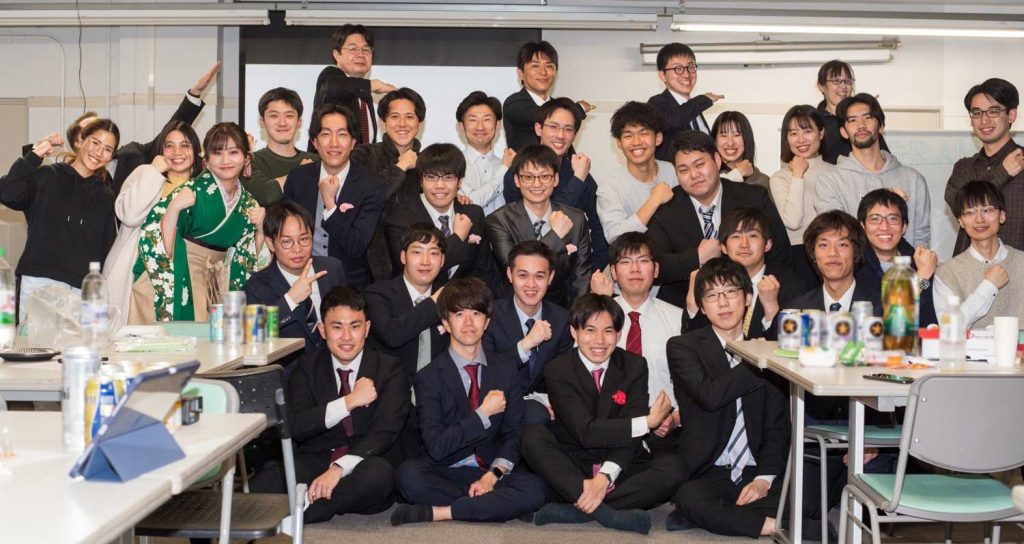It’s me again, Pear. Congratulations to all the newcomers on starting this coming semester! You made it!
For those of you considering applying to a university in Japan, you might have a lot of questions. What’s the application process like? What do you need to prepare? How long does the entire process take? These are all important questions to consider.
In Japan, there are two application rounds for universities: the spring and fall semesters. The spring semester typically starts around April, during the beautiful cherry blossom season (Sakura). The fall semester, on the other hand, begins around October.
In my case, I enrolled in the fall semester. The entire process took several years to complete. My journey began with comparing the budget, security, and reputation of different programs at both Western and Eastern universities. I had attended several international study fairs since I was young, but I intensified my research the year before I enrolled. During summer breaks, my parents and I often travelled abroad. We would dedicate one day of each trip to visiting universities in that country to get a firsthand look at the environment. I was particularly interested in observing the university department buildings, restrooms, libraries, and cafeterias. As a picky eater, I was careful to try the food in each cafeteria and restaurant to ensure it suited my dietary preferences. I was most impressed with the food options at Japanese universities.
After careful comparison and a SWOT analysis, I realized that Japan met all my criteria. Additionally, I was drawn to the beauty of Japanese traditions and culture, as well as the strong emphasis on mutual respect.
Luckily, my father has known several professors in Japan since he was young. Some of these professors came to Thailand on business trips from time to time, which allowed me to ask them for valuable advice about studying in Japan. I also have friends who have already studied, did an exchange program, or did an internship in Japan. As a result, I was able to get information from many different perspectives.
At that time, my knowledge of Japanese universities was quite limited. After asking several people around me and researching online, I found three laboratories in three universities that related to my research interest. They were the University of Tokyo, Tokyo University of Science, and Tokyo Institute of Technology (now known as Institute of Science Tokyo).
After carefully reviewing each laboratory, reading their research publications, and exploring their websites, I selected the Iwanami Laboratory and contacted Professor Mitsuyasu Iwanami. I introduced myself, explained my reasons for choosing to study there, and attached my CV, academic records, awards, and certificates.
One of the first things I learned from Professor Iwanami was that the application process required more than just a statement of purpose. I also needed to submit a research proposal. This step was significantly different from applying to Western universities, which typically only require a CV, SOP, and proof of English proficiency.

It took me about a month to finalize my research topic, conduct a thorough literature review, and write my research proposal. For those who are writing the research proposal, please keep in mind that the research proposal should be concise and focused.
My tips for a well-structured research proposal include a brief introduction, a concise literature review, clear research objectives, a detailed methodology, and a discussion of the potential contributions of the research. The entire proposal should be condensed into three pages to ensure that it is easy to read and understand. It’s important to remember that professors receive numerous proposals from students, candidates, and researchers, so a clear and concise presentation is crucial.
I submitted my proposal to Professor Iwanami, eagerly awaiting his response. During the feedback period, I experienced a mix of excitement and anxiety. I was uncertain whether Professor Iwanami would be interested in my research proposal, given my academic background, the fact that I was transitioning from architectural building technology to civil engineering, my research proposal, and my proficiency in Japanese. I visited several temples and prayed for acceptance.
When Professor Iwanami finally replied to my email, informing me about the programs and scholarships I could apply for, it was a truly exhilarating moment. All my worries dissipated.
After the initial approval, Professor Iwanami suggested that I might be eligible for two programs within the IGP(A) framework: the Postgraduate Program for Environmental Designers Contributing to Resilient Cities and the Global Engineering Program for Inclusive Society and Sustainable Environment (ISSEP). He also inquired about my interest in applying for the MEXT scholarship.
I took some time to carefully review the course introductions for both programs and compare their differences. Ultimately, I decided to pursue ISSEP as it aligned more closely with my interests. I confirmed my program and scholarship preferences with Professor Iwanami, who subsequently sent me a confirmation letter.

A few weeks later, I received an email containing the necessary application documents. These included the program application form, a summary of my final project, a summary of past research, proof of English proficiency, recommendation letters from my dean and advisor, a consent letter from my prospective supervisor at Tokyo Tech, a copy of my passport, and an admission eligibility form.
Completing and gathering all the required documents took nearly a month. Some documents, such as my graduation certificate and recommendation letters, needed to be original copies with official seals or signatures. All documents had to be submitted electronically and the application fee had to be paid. I finished preparing the documents about a week before the deadline to allow sufficient time.

After submitting the documents, I received confirmation emails from both the university and Professor Iwanami. Professor Iwanami then scheduled a Zoom interview for the following February. The interview panel consisted of three professors: Professor Iwanami, Professor Chijiwa, and Professor Wijyewickrema. The 30-minute interview covered various topics, including my self-introduction, past experiences, study plan, research interests, concerns, and future plans. Although these questions may seem straightforward, the actual interview was quite exciting as it was my first face-to-face interaction with the professors. Please note that this interview process is what I experienced during the master’s admission process and may be different in your case!
The next step was the thrilling wait for the enrollment results.

On March 6, 2020, I received an email with the admission and scholarship results. The email contained a congratulatory message and the September orientation date. It was a long and arduous journey, but the wait was undoubtedly worth it.
During my time here, I had the privilege of meeting and learning from many wonderful professors, friends, and lab mates. I’m grateful for their kindness and support throughout my studies.

Receiving the MEXT scholarship, a dream I had cherished since elementary school, was a tremendous honour and a valuable life experience. Enrolling in this program has opened doors to a promising future career in academia, research, and the building materials field.
MEXT is a prestigious scholarship that covers tuition fees and living expenses. Unlike some other scholarships, it does not impose restrictions on returning to one’s home country or working in Japan after graduation. The living stipend provided by MEXT was invaluable, enabling me to live and study in one of the world’s most expensive cities, Tokyo. I would not have been able to achieve this without the incredible support of everyone in my life.
For those aspiring to study abroad, I encourage you to step outside your comfort zone. Opportunities will arise if you actively seek them out. Never give up, even if the journey seems long and challenging. The end result will be incredibly rewarding. I hope this blog inspires you to pursue your dreams. Best of luck!
[ SCIENCE TOKYO – graduate programs ]
International Graduate Programs (IGP) – Originating at Tokyo Institute of Technology (Tokyo Tech) in 2007, the International Graduate Program offers qualified international students, who may have little or no knowledge of the Japanese language, an opportunity to enroll in master’s programs, doctoral programs, and Integrated Doctoral Education Programs conducted entirely in English.
